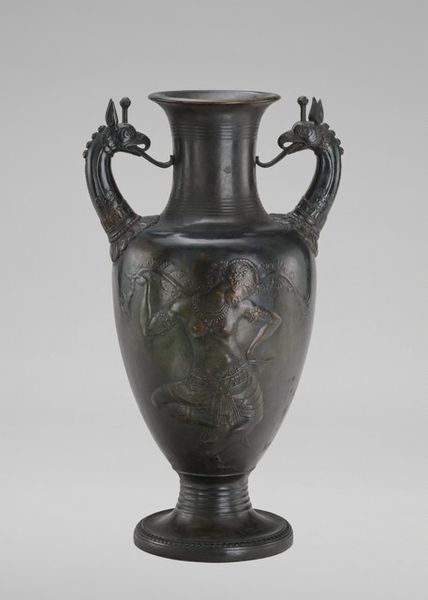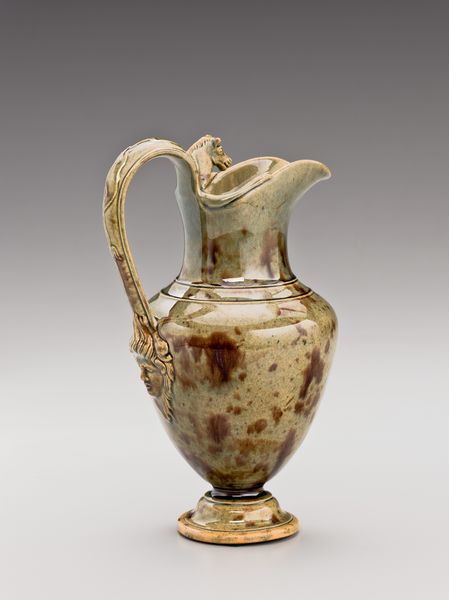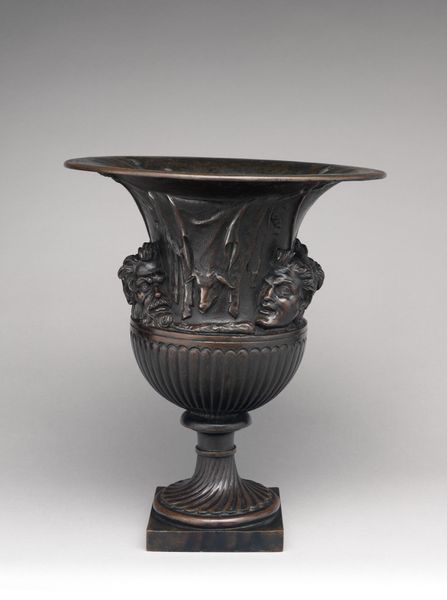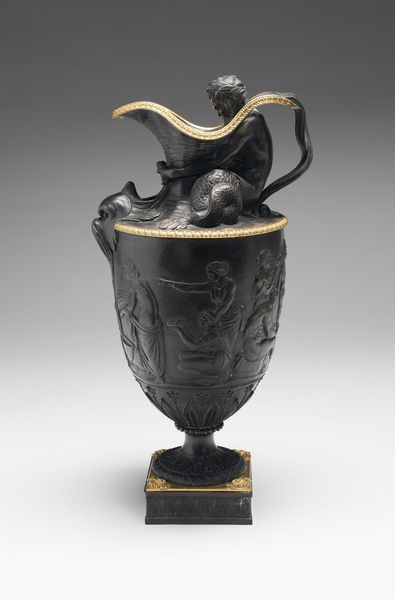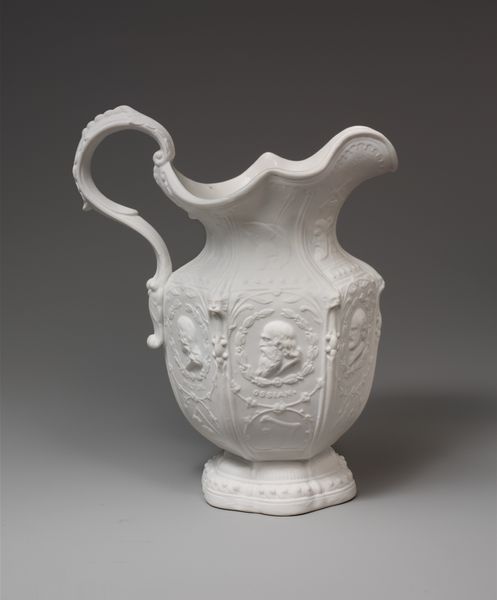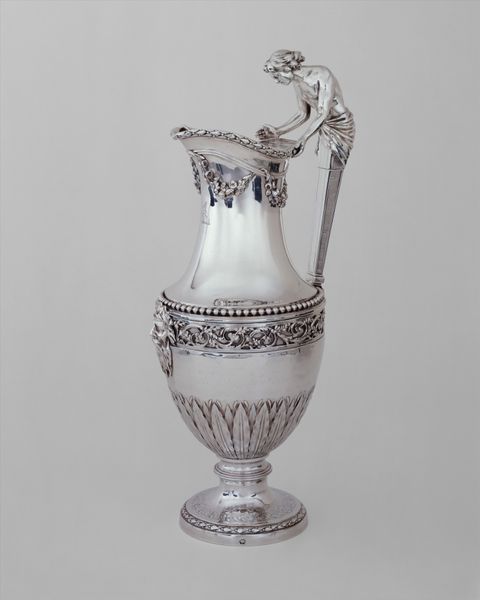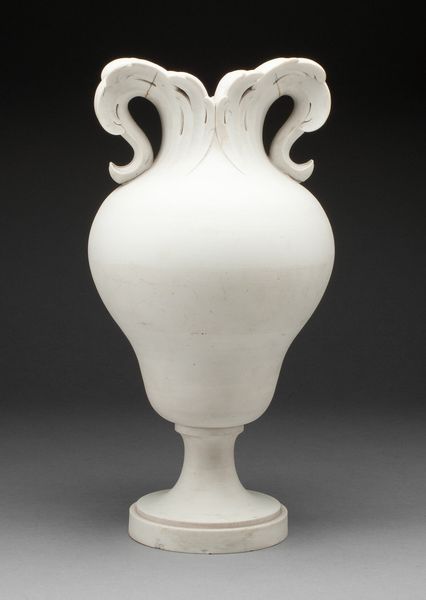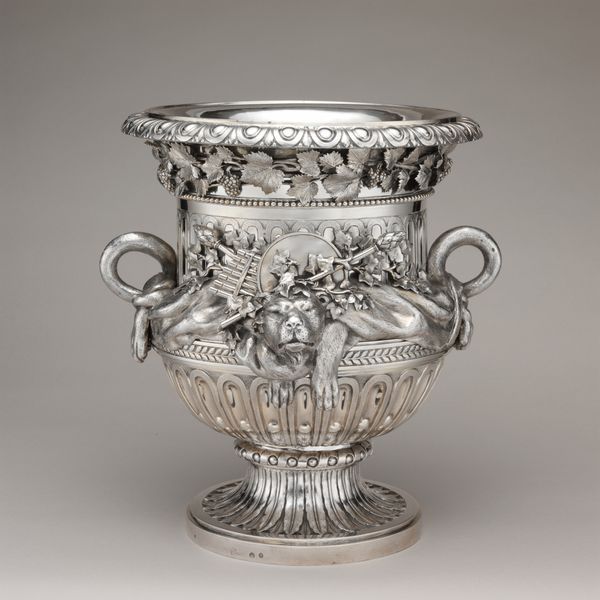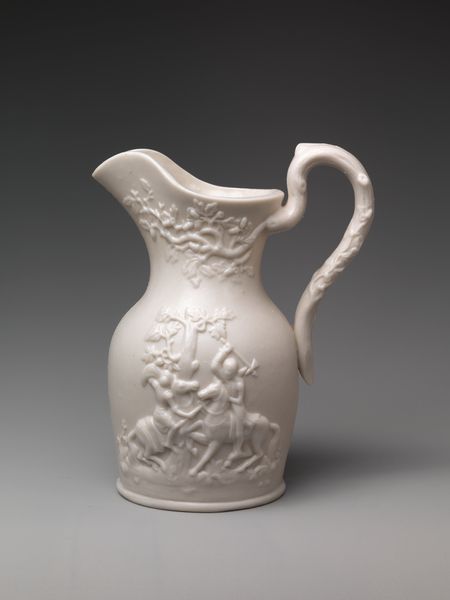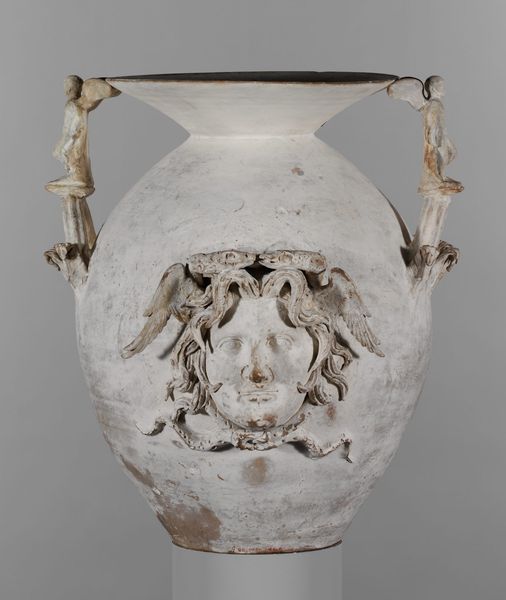
ceramic, sculpture, marble
#
neoclacissism
#
ceramic
#
vase
#
form
#
vessel
#
geometric
#
sculpture
#
ceramic
#
history-painting
#
marble
Dimensions: 36.4 × 19.9 cm (14 5/16 × 7 13/16 in.)
Copyright: Public Domain
Curator: Standing before us is "Vase," created in 1766 by Clodion. This magnificent sculpture, currently housed at The Art Institute of Chicago, embodies the spirit of Neoclassicism in meticulously carved marble. Editor: Wow, the pure white of the marble is striking, almost ethereal. There's a sense of serene detachment here. It evokes a very particular kind of controlled elegance, wouldn't you say? Curator: Precisely. Neoclassicism, after all, sought to recapture the perceived purity and balance of classical antiquity. The sculpted figures draw heavily from Greco-Roman iconography. Notice the drapery, the idealized forms, and the mythological subject matter, all of which harken back to a bygone golden age. Editor: And yet, what story does this 'golden age' actually tell, or perhaps obscure? While I appreciate the technical skill, I'm also curious about how its historical context shaped it. Whose story is deemed worthy of immortalization here, and at whose expense? Was this vase created for a domestic space? Who enjoyed it? Curator: Those are important questions. Such pieces often served as status symbols, meant to communicate the owner's refinement and understanding of classical values. The symbolic vocabulary includes depictions of Bacchic revels, referencing cycles of nature, divine inspiration, and liberation. Editor: Indeed. It’s hard to divorce that symbolism from the elite circles for which it was created. How might interpretations shift when viewed through the lens of today's issues like race, gender, class? After all, we recognize the mythologizing in such displays, the reinforcement of unequal social structures. The idealized forms naturalize hierarchies. Curator: Yes, this creates an interpretive tension. On one hand, we can admire the skill of the artist, decoding their careful choice of symbol. The flowing curves of the handles contrast with the cylindrical form of the vase, enhancing its dynamism. But, at the same time, understanding the cultural narratives present in Neoclassicism reveals a political perspective embedded within its imagery. Editor: That is art history's perpetual dance, isn't it? To cherish craft, beauty and technique, while pushing towards nuanced insights about context, audience, power. What was once thought universal, revealed to be remarkably specific. Curator: Absolutely. By considering these multifaceted perspectives, we enrich our experience and connect art history with the current moment. Editor: Yes. Examining the Vase critically like this allows us to appreciate Clodion’s craftsmanship as well as the social milieu of the artwork and the effect the dominant discourses of that period had on artists' vision.
Comments
No comments
Be the first to comment and join the conversation on the ultimate creative platform.
